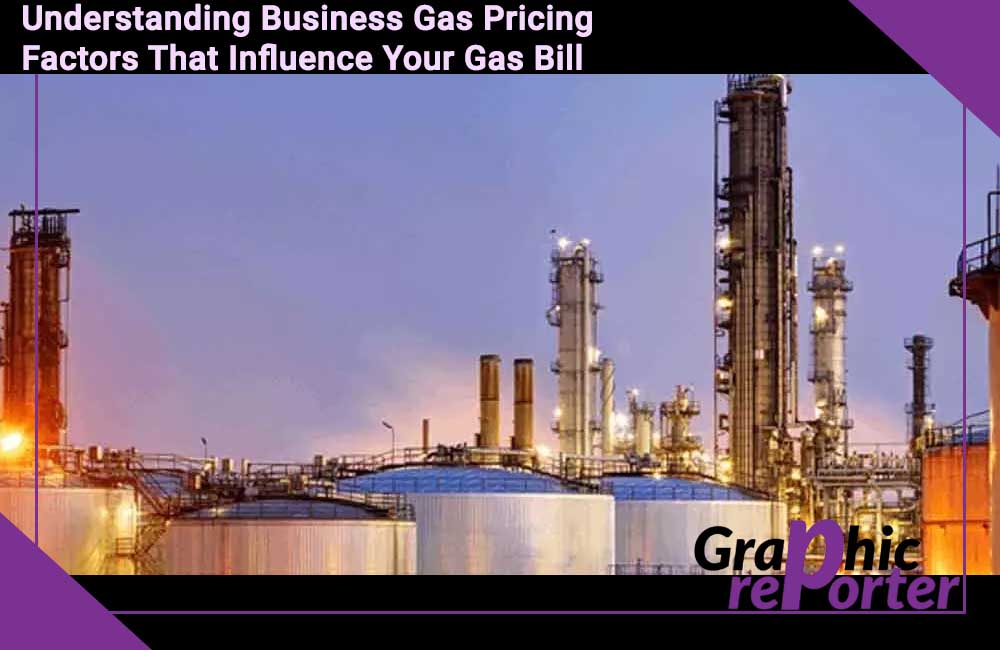Understanding Business Gas Pricing: Factors That Influence Your Gas Bill

Businesses across various industries rely on gas as a primary source of energy. From heating offices to powering industrial processes, gas plays a crucial role in the day-to-day operations of many organizations. As a result, understanding the pricing of business gas is essential for businesses looking to manage their energy costs effectively.
In this in-depth guide, we will break down the basics of business gas pricing, including rates, pricing structures, and cost breakdowns. We will also explore the factors that go into calculating the business gas bill, such as wholesale costs, transportation costs, and taxes. Lastly, we will discuss how businesses can determine the ideal pricing model for their needs and provide examples of energy-saving measures they can take to lower their gas bills.
Table Of Contents
The Basics of Business Gas Pricing
The gas market is highly regulated, and businesses are charged based on a variety of rates. These rates include a base charge for the supply, the cost of gas itself (known as pence per therm), and any applicable taxes. In some jurisdictions, customers may also be subject to capacity charges or additional fees depending on their usage.
Rates
There are two main types of business gas rates: fixed and variable. Fixed rates remain constant throughout the contract duration, offering businesses stability and predictability in their energy costs. On the other hand, variable rates fluctuate according to market conditions, allowing businesses to benefit from potential price drops but also exposing them to the risk of higher costs when prices rise.
Pricing Structures
Business gas suppliers offer various pricing structures to cater to the unique needs of different organizations. Some common pricing structures include:
- Standard: This structure involves a single unit rate and a standing charge, which covers the cost of maintaining the gas supply infrastructure.
- Tiered: Under this structure, businesses pay different unit rates depending on their gas consumption levels. As consumption increases, the unit rate may decrease.
- Time-of-use: This structure charges different unit rates based on the time of day, with peak hours generally attracting higher rates than off-peak periods.
Cost Breakdowns
A typical business gas bill comprises several components, including:
- Wholesale costs: This refers to the cost of purchasing gas from producers and makes up a significant portion of the overall bill.
- Transportation costs: These cover the expenses incurred in transmitting gas from production sites to end-users via pipelines.
- Taxes and levies: Various government taxes and environmental levies may be added to business gas bills, depending on the jurisdiction.
- Supplier’s margin: This represents the profit margin that suppliers earn for providing gas services.
Factors Influencing Business Gas Bills
If you take a look at your gas bill, you may notice that the prices can fluctuate from month to month, even if your usage remains the same. To better understand why this is the case, let’s explore some of the factors that influence business gas bills.
Wholesale Costs
Wholesale gas prices are subject to supply and demand dynamics, as well as geopolitical factors and natural disasters that can affect production levels. As a result, wholesale costs can be volatile, leading to fluctuations in business gas bills. To mitigate this risk, businesses can opt for fixed-rate contracts, which lock in rates for the contract duration and offer protection against price volatility.
Transportation Costs
The cost of transporting gas from production sites to end-users depends on factors such as the distance between the two points and the capacity of the transportation infrastructure. Additionally, transportation costs can vary based on regulatory changes or network upgrades. Businesses located in remote areas or with high gas consumption may face higher transportation costs, impacting their overall gas bills.
Taxes and Levies
Governments worldwide impose various taxes and levies on gas consumption to fund public services and promote environmental sustainability. Examples of these charges include carbon taxes, value-added tax (VAT), and climate change levies. These taxes and levies can significantly influence business gas bills and should be factored into organizations’ energy budgeting processes.
Choosing the Ideal Pricing Model
To determine the most suitable pricing model for their needs, businesses should consider factors such as:
- Consumption patterns: Organizations with consistent gas consumption levels may benefit from fixed-rate contracts, while those with variable usage might find flexible or tiered pricing structures more appropriate.
- Budget stability: Businesses that prioritize budget stability may prefer fixed-rate contracts that offer predictable energy costs, while those willing to take on some risk in exchange for potential cost savings may opt for variable-rate contracts.
- Contract duration: The length of the contract can impact pricing, with longer contracts generally offering lower rates. However, businesses should weigh the potential benefits of locking in lower rates against the risk of being locked into a contract when market prices drop.
Forecasting Gas Usage and Costs
Accurate forecasting of gas usage and costs is essential for effective energy management. Businesses can use historical consumption data and industry benchmarks to estimate future usage levels and identify trends. Additionally, organizations should track market developments, regulatory changes, and technological advancements that could impact gas prices and adjust their forecasts accordingly.
Energy-Saving Measures
Businesses can implement various energy-saving measures to lower their gas bills, such as:
- Upgrading equipment: Replacing outdated or inefficient equipment with newer, more energy-efficient models can lead to significant gas savings.
- Insulation: Proper insulation of buildings and pipes can reduce heat loss and lower gas consumption.
- Regular maintenance: Regular maintenance of gas-powered equipment and infrastructure can help detect and resolve inefficiencies, leading to reduced gas usage.
- Employee training: Educating employees about energy-saving practices and encouraging their adoption can contribute to lower gas consumption.
In Conclusion
Understanding the pricing of business gas is crucial for businesses looking to manage their energy costs effectively. By familiarizing themselves with the basics of business gas pricing, including rates, pricing structures, and cost breakdowns, organizations can make informed decisions about their gas contracts. Moreover, businesses should consider the various factors that influence gas bills, such as wholesale costs, transportation costs, and taxes, when forecasting their gas usage and costs. By choosing the ideal pricing model for their needs and implementing energy-saving measures, businesses can optimize their gas expenses and contribute to a more sustainable future.
To take actionable steps toward reducing your gas costs, start by reviewing your current contract and understanding the pricing structure in place. Next, analyze your consumption patterns and compare them with industry benchmarks. Lastly, identify and implement energy-saving measures tailored to your organization’s needs. By following these steps, you can take control of your business gas costs and make informed decisions about your energy management strategy.






